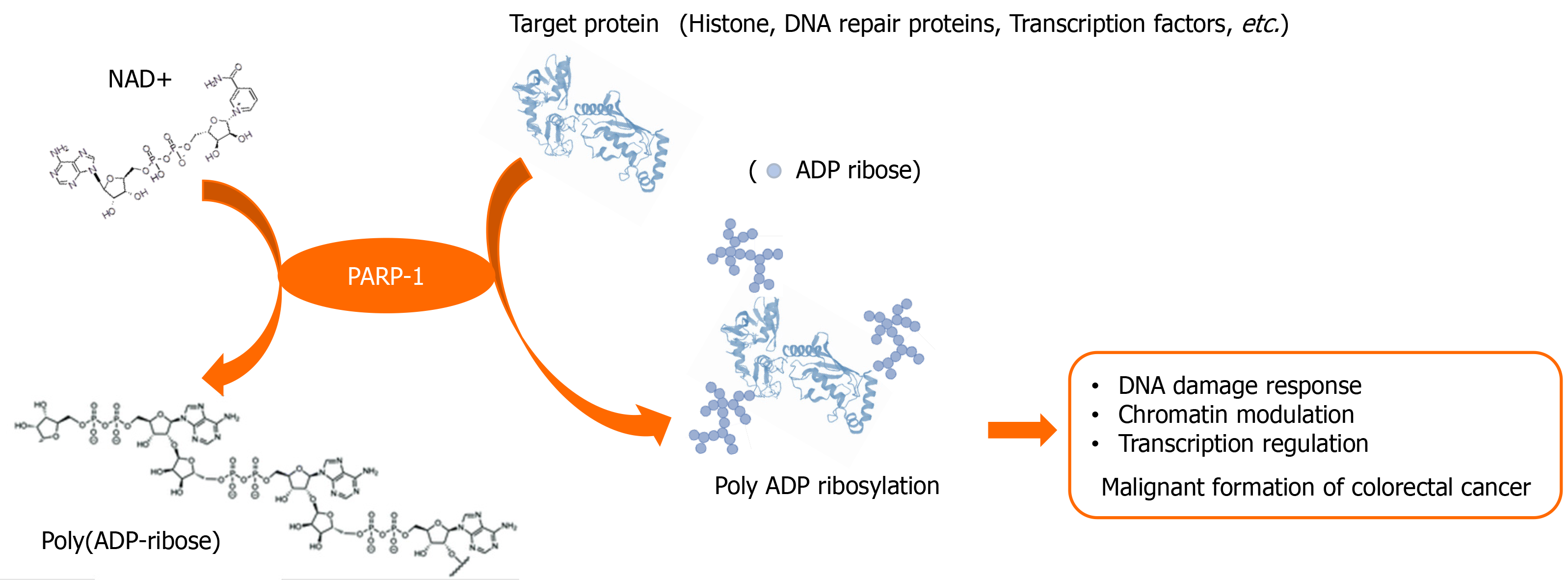Copyright
©The Author(s) 2021.
World J Gastrointest Oncol. Jun 15, 2021; 13(6): 574-588
Published online Jun 15, 2021. doi: 10.4251/wjgo.v13.i6.574
Published online Jun 15, 2021. doi: 10.4251/wjgo.v13.i6.574
Figure 1 Multifactorial role of poly adenosine diphosphate-ribose polymerase-1 and poly-adenosine diphosphate ribosylation in cancer development.
Poly adenosine diphosphate-ribose polymerase-1 (PARP-1) can occupy a position as an important regulator of deoxyribonucleic acid damage response, redox homeostasis, chromosomal instability, and transcription, which are required for the dysfunctional regulation for a crucial role in tumorigenesis. Therefore, a crucial process for malignant transformation of colorectal cancer can be attributed to the involvement of PARP-1 and Poly-adenosine diphosphate ribosylation. PARP-1: Poly adenosine diphosphate-ribose polymerase-1.
Figure 2 Poly adenosine diphosphate-ribosylation in cancer.
Poly adenosine diphosphate-ribose polymerase-1 (PARP-1) branched poly adenosine diphosphate (ADP)-ribose polymers following the cleavage of nicotinamide adenine dinucleotide+ to ADP-ribose. PARP-1 enables interactions by catalyzing the covalent attachment of poly ADP-ribose polymers on acceptor proteins, such as histones, deoxyribonucleic acid repair proteins, transcription factors, and chromatin modulators. This enzymology reaction is known as poly ADP-ribosylation on target proteins, and this process may be important for the malignant transformation of colorectal cancer. ADP: Adenosine diphosphate; PARP-1: Poly adenosine diphosphate-ribose polymerase-1.
- Citation: Jeong KY, Park M. Poly adenosine diphosphate-ribosylation, a promising target for colorectal cancer treatment. World J Gastrointest Oncol 2021; 13(6): 574-588
- URL: https://www.wjgnet.com/1948-5204/full/v13/i6/574.htm
- DOI: https://dx.doi.org/10.4251/wjgo.v13.i6.574










